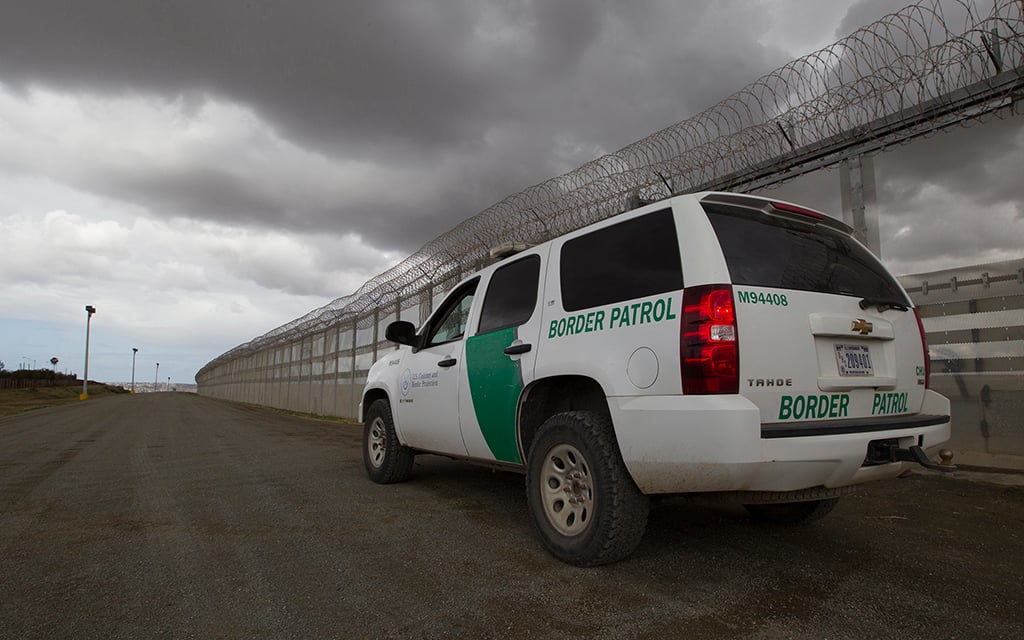
Border Patrol officers encountered more than 55,000 immigrants in the Tucson sector in October, the fourth month in a row that it was the busiest sector of the border. The whole southern border saw 240,988 encounters in October, down from the month before but still the most for any October in at least 10 years. (Photo by Donna Burton/U.S. Customs and Border Protection)
WASHINGTON – Border Patrol officers encountered 55,224 migrants in the Tucson sector in October, far outstripping the 38,211 encounters in the Del Rio, Texas, sector and almost 10 times the number seen in the Yuma sector that month.
It was the fourth straight month that Tucson has been the busiest for Border Patrol activity on the southern border, and experts are not exactly sure why Tucson is the new gateway.
“The patterns of migration just continue to change,” said Colleen Putzel, an analyst at the Migration Policy Institute. “The diversification of people coming to the southern border are really shifting and that (is) presenting a lot of new and unique challenges.”
Overall encounters fell slightly from 269,735 in September to 240,988 last month. But that was still the busiest October in at least the last 10 years and it followed a record 2.47 million migrants who were stopped at the southern border in fiscal 2023, which ended in September.
“The numbers are just off the charts,” said Ira Mehlman, the spokesperson for the Federation for American Immigration Reform. “Now that the weather is cooling, you’re likely to see even more people coming through that sector.”
Customs and Border Protection said in a prepared statement that the October numbers “show an overall decrease in migrant encounters along the southwest border, even as we continue to see the largest displacement of individuals globally since World War II.”
“It still represents a really fundamental shift,” Putzel said. “So it was really a year of sort of ebbs and flows and migration and these responses to policy changes over the course of the fiscal year.”
Mexican nationals accounted for just 25.96% of the total number of Border Patrol encounters with migrants at the southern border in October, but they represented 46.41% in the Tucson sector, according to CBP data.
While many of the migrants at the Arizona border came from the Northern Triangle countries of El Salvador, Guatemala and Honduras, close to a third came from other countries in South America, the Caribbean – and the world.
In October, border officials in Arizona recorded 7,180 Ecuadorians, 1,963 Colombians, 1,879 Peruvians, 1,182 Cubans and 1,102 Venezuelans, among other countries, including 3,150 migrants from India.
“Who, how and where people are arriving along the border really fundamentally changed in fiscal year 2023,” Putzel said. “This was the first time that migrants from Mexico and then the Northern Central American countries – El Salvador, Guatemala and Honduras – were less than the overall share from other countries.”
CBP also noted that the number of families and single minors encountered both fell in October. That reverses the trend of the previous year, when individuals who arrived as part of a family jumped from less than a quarter of total encounters in fiscal 2022 to just over one-third of all encounters in fiscal 2023. The number of single adults encountered at the border dropped over the same period.
Mehlman blamed Biden administration policies for the continuing high numbers of migrants, saying the “clear signal from this administration is if you get here, chances are, you’re going to stay.”
“Until they change their policies, we’re going to keep seeing it, whether it’s in Tucson or, or some other sector of the border,” he said. “We’re going to just keep seeing these extraordinarily high numbers and the impact on the country is going to grow worse.”
But Putzel said the challenge of grappling with migration is not necessarily the fault of one administration or another.
“Even amidst all of these policy changes, we’re still seeing record levels of migration around the world and within the hemisphere,” she said. “It’s hard to know if that same phenomenon would have occurred regardless of the policies happening at the U.S.-Mexico border.”

